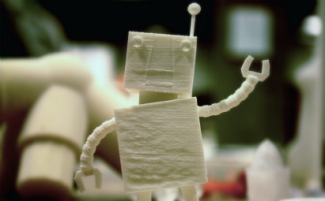
By Neil Gershenfeld
A new digital revolution is coming, this time in fabrication. It draws on the same insights that led to the earlier digitizations of communication and computation, but now what is being programmed is the physical world rather than the virtual one. Digital fabrication will allow individuals to design and produce tangible objects on demand, wherever and whenever they need them. Widespread access to these technologies will challenge traditional models of business, aid, and education.
The roots of the revolution date back to 1952, when researchers at the Massachusetts Institute of Technology (MIT) wired an early digital computer to a milling machine, creating the first numerically controlled machine tool. By using a computer program instead of a machinist to turn the screws that moved the metal stock, the researchers were able to produce aircraft components with shapes that were more complex than could be made by hand. From that first revolving end mill, all sorts of cutting tools have been mounted on computer-controlled platforms, including jets of water carrying abrasives that can cut through hard materials, lasers that can quickly carve fine features, and slender electrically charged wires that can make long thin cuts.
Related Readings:
- The Long Tail of Lego
Reuters

